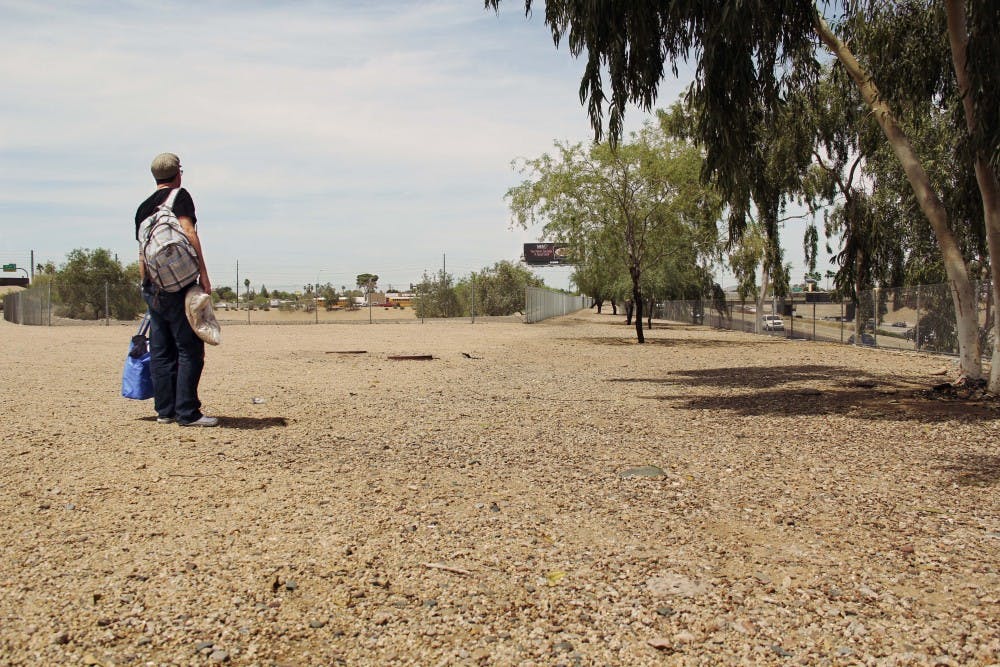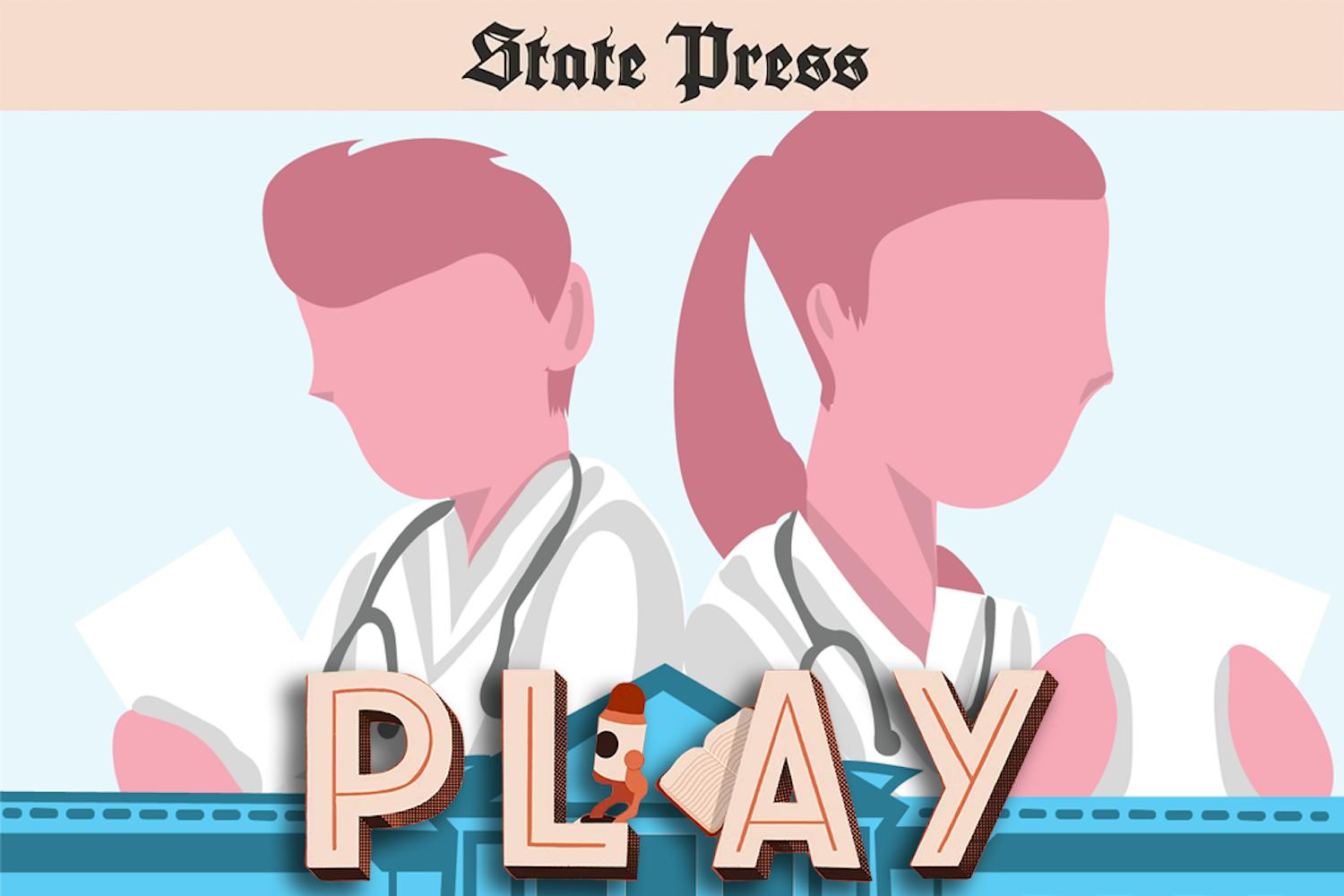 18-year-old Selena Palmerin-Chastain is one of about 3,000 homeless youth helped by the Tumbleweed Center for Youth Development in the Valley. | Photo by Pauletta Tohonnie
18-year-old Selena Palmerin-Chastain is one of about 3,000 homeless youth helped by the Tumbleweed Center for Youth Development in the Valley. | Photo by Pauletta TohonnieWham. Wham. Wham.
Her knuckles hit the punching bag again and again, not that it mattered - she could barely feel the impact anyway. Not knowing how long she’d stood there, she began to zone in and out, unable to stop. A faded darkness began to seep into her thoughts and she blacked out.
When she came to and calmed down, 18-year-old Selena Palmerin-Chastain realized her uncle had yanked her away from the bag.
“Look what you just did,” he said.
Glancing up, she saw the punching bag slightly swinging above the ground, blood plopping into piles on the garage’s pavement. The skin on both sets of her knuckles had peeled away, leaving behind bright, red gashes.
Selena wasn’t afraid. She had grown used to the dissociation that developed inside her abusive household. During stressful moments or after a fight with her father, Selena learned to leave her body in order to escape from her surroundings. In September 2013, however, that wasn’t enough.
After a particularly brutal fight with her dad that escalated into physical violence, Selena left. Able to take refuge in her uncle’s home, the dissociation led to the uncontrollable emotions that eventually left her homeless.
One of the approximate 3,000 homeless youth the Tumbleweed Center for Youth Development helps every year, Selena is a voice in a community that doubled when the economy crashed in 2008 and has remained steadily large in 2014.
Vice president of programs at Tumbleweed Kenneth McKinley believes that like Selena, most homeless youth stem from backgrounds of family conflict.
“When it comes to youth, homelessness isn’t the problem, it’s the symptom of a larger problem,” he says. “Once you get on the streets and you’re a lot more vulnerable to being exploited or getting involved in substance abuse, there becomes a web of issues that needs to be ironed out so they can become stable and self-sufficient again.”
With The National Network for Youth (NN4Y) reporting that more than 46,000 youth can be found living on the streets on any given night, the possibility of exploitation or substance abuse creates a daily danger to homeless children, teenagers and young adults.
For Selena, these dangers were all too real. By going out with friends she’d met at a local all-age shelter, she began to develop a drinking habit that led to multiple cases of alcohol poisoning and a “smoking habit” that eventually led to her overdose.
“The doctors don’t really know how and I survived,” she says. “They told me that anyone else would have died overnight. I hung on by thin, thin air but I still made it. I always think that there must be a reason I’m here since I survived.”
In order to help aid the large homeless population in Phoenix, local shelters and development centers like Tumbleweed have begun to create different programs to build relationships with homeless individuals. Such programs include anonymous meetings, teaching seminars and work force training.
The NN4Y estimates that nearly 2 million youth face homelessness for at least one night every year in the United States. However, McKinley knows that this number is very difficult to calculate.
“Homeless youth hide a lot more and they may not even identify as being homeless if they’re going to school or something,” he says. “The only ones that we can count are the ones that we see on the streets or that are coming in.”
Selena understood this concept, acknowledging that for her it was hard to call herself homeless and admit she needed help at first.
 Jon Linton is the founder of the "I Have a Name Project," which aims to humanize the homeless across the Valley. | Photo by Pauletta Tohonnie
Jon Linton is the founder of the "I Have a Name Project," which aims to humanize the homeless across the Valley. | Photo by Pauletta TohonnieTo Jon Linton, the founder of the “I Have a Name Project,” which showcases the names and pictures of homeless people in Arizona and creates awareness for the homeless community, humanizing homeless individuals is the first step in addressing the issue in Phoenix.
“The solutions in addressing homelessness are as complex and varied as the circumstance that send folks to the streets,” he says. “Meaningful change will only be demonstrated when we begin to see these individuals as people, individuals who might have been a neighbor, a friend, or a colleague. People just like you and I, people that have a name.”
The first time Linton went out to photograph for the project, he approached a man who appeared to be in need and told him about his cause. Before they got any further into the conversation, he introduced himself and asked the man his name. The man instantly began to cry and soon started to weep.
“You have no idea how long it’s been since somebody’s asked me who I am,” the man, whose name is Chuck, told Linton. “We’re like the walking invisible – America’s forgotten.”
 After Jason, right, had asked politely for some spare change, Linton proceeded to have a conversation with him and agreed to be photographed and tell his story. Here they're both looking for a quite and cool place to connect. | Photo by Pauletta Tohonnie
After Jason, right, had asked politely for some spare change, Linton proceeded to have a conversation with him and agreed to be photographed and tell his story. Here they're both looking for a quite and cool place to connect. | Photo by Pauletta Tohonnie The only thing Jason had on him, at the time we encountered him, was a book – an evident of destitution with it's torn and dirt-smudged pages – that he proudly showed Linton when he asked what he was reading. | Photo by Pauletta Tohonnie
The only thing Jason had on him, at the time we encountered him, was a book – an evident of destitution with it's torn and dirt-smudged pages – that he proudly showed Linton when he asked what he was reading. | Photo by Pauletta TohonnieLinton eventually turned his project into an art exhibit at Nine Gallery at the end of September 2013, when the gallery’s owner Laura Dragon mentioned she had previously been homeless.
While operating a successful downtown Phoenix art gallery today, Dragon once faced living on the streets herself.
“Many of us are very close to homelessness,” McKinley says. “If I lost my job, my savings account would eventually run dry and in certain circumstances I could end up on the streets. The homeless youth at Tumbleweed are often very close to us. They may have gone to your high school or taken a few college courses with you.”
While Linton views ending the issue of homelessness as a community project, he believes college students can help their homeless peers with campus-wide water, backpack or toiletry drives.
“Socks are huge,” he added.
McKinley noted that if college students need to work around a strict budget, volunteering can help develop vital relationships with homeless youth and adults that can help get them back on their feet.
In developing these personal relationships with staff at Tumbleweed, Selena was encouraged to submit a scholarship application to a high school in San Bernardino, California that will help guide her dream of becoming a Mixed Martial Arts (MMA) fighter.
While disassociation and an ongoing battle with depression and suicidal ideation still affect her on a daily basis, she has learned to focus her emotions into song writing. If that doesn’t work, she likes to escape by climbing a tree.
“I’ll go anywhere that’s high enough and just think,” she said. “It feels so good because everything just blows off.”
Selena also loves sharing stories about her friends and family, loving the reactions she gets when she adds in shocking details of her abilities to perfectly imitate horror movie sequences like Samara crawling in “The Ring.” She enjoys giving advice to her friends and talking to them about topics like the unfair statutes society holds women to, giving particular insight into how people treat others differently depending on how they dress.
As she waits to hear back about her scholarship, Selena is eager to get back in school and earn her diploma. In doing so, she will be the first of her parents and her nine siblings to graduate. She also hopes to teach others to better understand each other and the homeless youth community.
“They can seem like the most normal person in the world and they could have the worst, the worst background and they can be the sweetest person you’ve ever met,” she said. “Don’t judge people by how they look or how they act.”
---
In collecting these stories and speaking with Selena, Jon Linton and Kenneth McKinley, I realized their narratives were far too large to sum up in just one story. Therefore, next semester I will be writing a series that tells the stories of homeless youth in Phoenix who want to tell you – their peers– their story. I hope you join me next semester on this project.
Contact me at adersch@asu.edu or @AlexDersch on Twitter if you have any comments or questions regarding this article or if you want to share your story with SPM readers.




